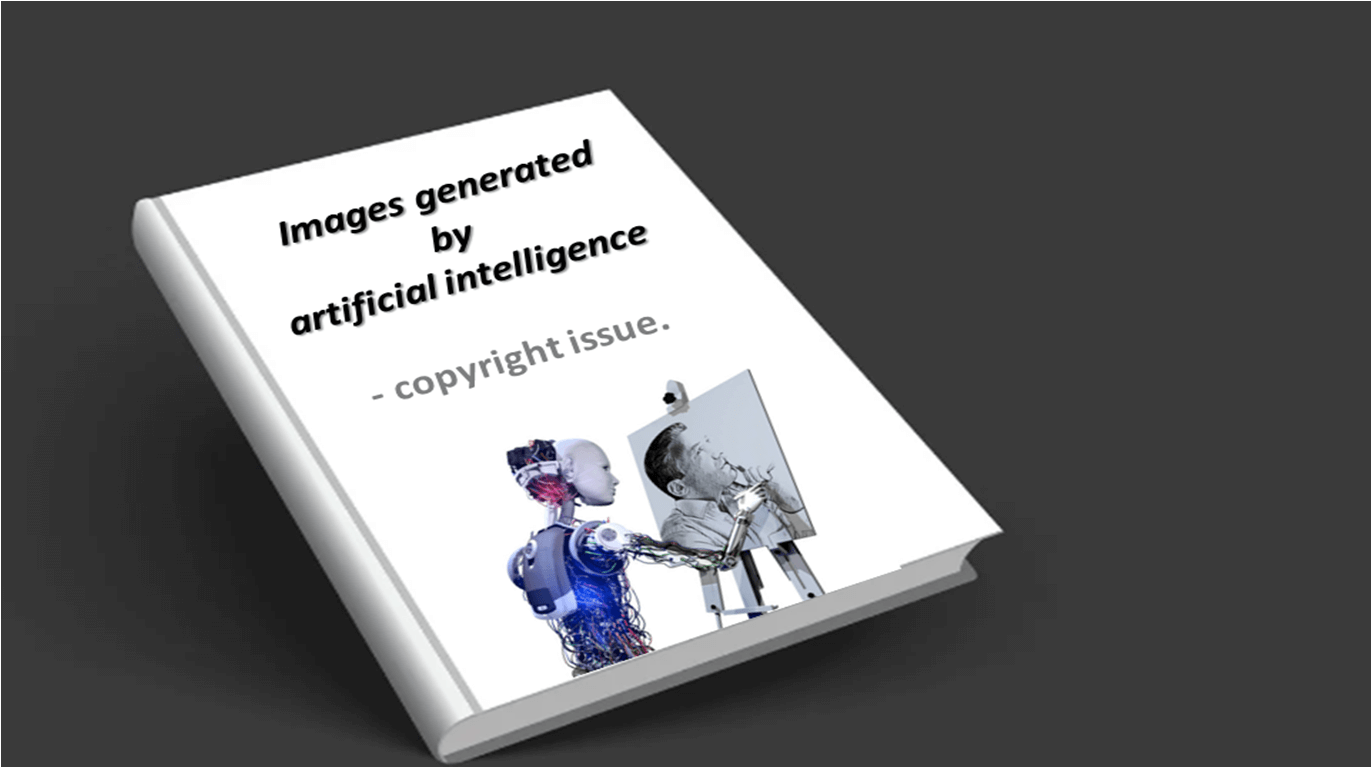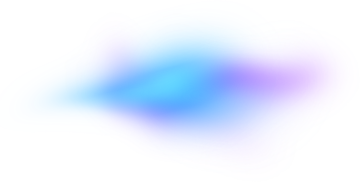Images generated by artificial intelligence - copyright issue

source: own elaboration
In our last articlewe wrote about the use of images generated by Text- to-image artificial intelligence models in marketing campaigns. They work in such a way that after a person enters relevant keywords, the computer searches its database using a specific algorithm, then selects matching results and creates its own graphics based on them. The style in which the image will be generated depends on the content of the database or specific settings used in a given program, such as - graphics on which a given AI model is based, color palette, contrast, etc. Thanks to this, images that surprise with their futuristic appearance or similarity to the works of famous classical painters can be created in seconds. The scale of applications of such graphics created by computers is unimaginable - from album and book covers, through illustrations and graphic novels, to works of art. But what about copyright? Who is the legal owner of such images? We will take a closer look at this topic below.
Can artificial intelligence be considered an author within the meaning of copyright law?
In this case, the answer is simple: NO. Most countries have signed the „Berne Convention for the Protection of Literary and Artistic Works”, which unifies copyright protection around the world. According to its assumptions, a work of art is automatically protected by copyright from the moment of its creation (although some countries additionally require their formal registration). Such rights are intended to protect the interests of the author of a given work, and by definition the author must be a human being, so the creation of a work to be covered by copyright must involve the human factor. So, if a work is created solely as a result of mechanical processes, it won’t be subject to them. We already have the first evidence of such an approach of the legislator - at the beginning of this year, Steven Thaler (creator of the PetaPixel application) wanted to register the AI machine as the author of the work. The U.S. Copyright Office rejected his application, citing the fact that current copyright law requires human authorship.
Exceptions
But what if the work has been commissioned? Then the owner of the copyright is the person who commissioned its creation, thanks to which a human can be indicated as the author of the work of artificial intelligence. The question, however, is who actually commissions the image if the use of a given program is free of charge? Is it the owner of the technology who uses an algorithm to force the machine to act in a certain way, or is it the user of a given program or application who enters certain keywords? This remains a contentious issue, but of course not the only one.
We already know that copyright cannot cover a work that was created purely mechanically (and wasn’t commissioned), but what if we recognize that human input was necessary in its creation? As the UK Copyright, Designs and Patents Act 1988 (CDPA 1988) says, „In the case of a literary, dramatic, musical or artistic work which is computer-generated, the author shall be taken to be the person by whom the arrangements necessary for the creation of the work are undertaken.” - § 9 sec. 3 CDP 1988.
When generating the image, the AI model responds to human commands - these are both the entered keywords and the rules used in the algorithm on which the operation of a given mechanism is based. In addition, artificial intelligence doesn’t create from a vacuum but on the basis of a selected database full of human works. So, who should get copyright protection in such a situation? The creators of the AI program, the owners of the technology, the artists whose images were used to create the work, the user who indicated the subject of the work and developed its concepts, or maybe a little bit of all of them? This cannot be determined at the moment.
There is also another exception - works of art, which are composed of images created by artificial intelligence. On September 15, designer Kris Kashtanova published an e-mail on her Instagram profile confirming the registration of her copyright to the graphic novel - „Zarya of the Dawn”. The illustrations for this work were created thanks to the use of AI Text-to-image models, mainly the one used in the Midjourney program.
„I got Copyright from the Copyright Office of the USA on my AI-generated graphic novel. I was open how it was made and put Midjourney on the cover page. (…) I tried to make a case that we do own copyright when we make something using AI. (…)” said Kashtanova in an announcement posted on Instagram.
Let’s remember, however, that in this case, although the illustrations were made using the AI model used in the Midjourney program, the very idea, the storyline and the arrangement of the images so that they combine into a novel come from a human author.
Copyright is not the same as a patent!
While machines cannot be copyrighted, the computer technology necessary for them to create works of art can be protected by patent law. However, it only protects the authors of the technology, not the artists themselves.
What regulations can be found in the regulations of programs that offer their AI Text-to-image models?
The DALL-E program terms and conditions give its users the right to use the works created in it for any purpose, including commercial use:
„Subject to your compliance with these terms and our Content Policy, you may use Generations for any legal purpose, including for commercial use. This means you may sell your rights to the Generations you create, incorporate them into works such as books, websites, and presentations, and otherwise commercialize them.”
At the same time, the DALL-E team encourages users to disclose the involvement of AI in their projects.
However, it should be mentioned that the owners of the program prohibit the creation of depictions of violence or hate symbols in it, and among the additional guidelines we find such recommendations: „Do not upload images of people without their consent. Do not upload images to which you do not hold appropriate usage rights. Do not create images of public figures”.
Images created in Craiyon, formerly DALL-E mini, can be used for personal use „whether you want to share them with friends or print them on a T-shirt” but should be properly credited. The following condition must also be met:
„If you’re an individual or company that makes less than one million USD in gross annual revenue, you can use images for financial gain with one caveat: Craiyon stakes a 20% royalty claim on any revenue from blockchain transactions, such as selling NFTs. If you’re an individual or entity that makes more than one million USD in gross annual revenue, use of Craiyon’s capabilities is subject to the terms of a separate commercial licensing agreement, for which potential prospects are asked to get in touch.”
Midjourney, another aforementioned program based on the AI Text-to-image model, clearly states in its regulations that any infringement of intellectual property is unacceptable:
„If you knowingly infringe someone else’s intellectual property, and that costs us money, we’re going to come find you and collect that money from you. We might also do other stuff, like try to get a court to make you pay our attorney’s fees. Don’t do it.”
Protecting creators threatened by AI creations
Machines can generate an image on basically any topic in a few seconds, so let’s not hide the fact that such technology will threaten the interests of many artists, primarily graphic designers and illustrators. That’s why many stock photography and graphics platforms, including Shutterstock and Getty Images, have banned the upload and sale of AI-generated images and removed AI-generated images from their archives, which Getty says is due to:
„…concerns with respect to the copyright of outputs from these models and unaddressed rights issues with respect to the imagery, the image metadata and those individuals contained within the imagery.”
However, this approach was not eternal - a month later Shutterstock announced that it would sell images created in OpenAI DALL-E 2. Why such a change? Shutterstock and OpenAI have joined forces to create the Shutterstock Contributor Fund project to protect the interests of creators whose work has inspired artificial intelligence. They will receive compensation for „their contribution” to the work and royalties when their intellectual property (IP) is used.
Although in this text we focused on the copyright of AI Text-to-image models, AI-generated work extends to contemporary literary and musical works and other areas. Therefore, the creation of appropriate legal regulations is only a matter of time. According to Ryan Meyer, an intellectual property rights expert working with US-based Dorsey & Whitney LLP, the law has not yet kept pace with advances in artificial intelligence technology, as he told Ben Conway of LBB:
„For a complicated, potentially controversial issue like this, we might have to wait several years for the laws to catch up with technology”.

